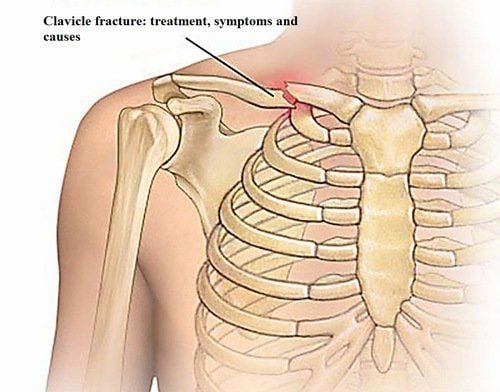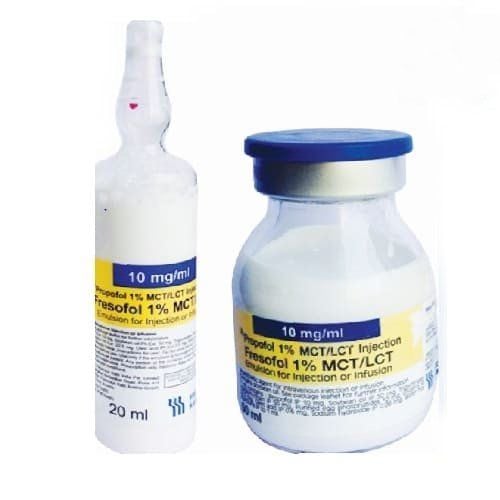This is an automatically translated article.
The article is professionally consulted by Master, Doctor Ta Quang Hung - Department of General Surgery - Vinmec Da Nang International General Hospital.
The brachial plexus is a complex part, so the process of numbing this part is also more difficult. When giving brachial plexus or total branch anesthesia, a large volume of local anesthetic is needed because the volume of this space is rather large.
1. What is brachial plexus?
The brachial plexus is a division that originates from the cervical nerve roots C5, C6, C7, and C8 and sometimes has an additional branch from C4 or D1, D2.These nerve roots merge into 3 trunks. Before reaching the axillary fossa, the musculoskeletal and capsular nerves separate from the plexus. With such a complex structure, the job of numbing these nerves is often very difficult and requires a good skill.
2. Principle of brachial plexus anesthesia

Cases of failure of brachial plexus anesthesia are often due to the insufficient volume of anesthetic used or the person performing the injection outside the nerve capsule and blood vessels.
Attentions when performing brachial plexus anesthesia:
The upper and medial parts of the brachial plexus are foramen close to the spinal cord. When anesthetizes through the midline, the trapezius muscles can poke the spinal cord and complicate the total spinal anesthesia. Below the brachial plexus is the pleural apex. When performing the technique along the clavicle, it is easy to puncture the pleura and can cause a pneumothorax.
3. Indications for brachial plexus anesthesia

4. Contraindications of brachial plexus anesthesia
Because brachial plexus anesthesia is a complicated operation, the operator should pay attention to avoid the following contraindications:Coagulation disorders, taking anticoagulants and having needle puncture site infection. Patients with hepatic impairment should avoid the use of ester local anesthetics. Pre-existing central or peripheral nerve damage of the upper extremities. Relative contraindications for patients with atrioventricular conduction disturbances, arrhythmias. In patients with a history of or ongoing pneumothorax, contralateral pneumonectomy, or severe respiratory failure, supraclavicular anesthesia should be avoided. Patients with a history of porphyria, malignant hyperthermia, should avoid using local anesthetics of the amide group. Patients who do not cooperate with their physician should also not undergo brachial plexus anesthesia.
5. Complications from brachial plexus anesthesia and how to handle it
5.1 Nerve damage Nerve damage can be caused by needle puncture, poisoning by anesthetic or adrenaline, or by anemia. The treatment of complications of this type is often lengthy and complex. Therefore, to avoid complications, the operator should apply the following measures:Do not try to find many times the sensation of paresthesia. Do not attempt to inject anesthetic when the patient complains of sharp pain along the nerve Do not use too concentrated anesthetic solutions. If an artery is punctured, it is necessary to apply pressure to the puncture site for about 5 minutes to avoid hematoma and nerve compression. 5.2 Diffuse anesthetic effects Diffuse anesthetic effects can occur with brachial plexus anesthesia:
Star ganglion or supraclavicular anesthesia can cause Claude's syndrome - Bernard - Horner. Anesthesia of the phrenic nerve, especially when applied between the trapezius and supraclavicular muscles, can cause respiratory failure due to paralysis of the diaphragm. To avoid this situation, doctors usually only numb the nerve plexus on one arm and have to prepare facilities for emergency respiratory failure to handle unexpected situations that may occur. 5.3 Injury to adjacent organs Using the supraclavicular line can cause pneumothorax. To avoid this complication, it is necessary to respect the puncture landmarks, the needle puncture direction and the length of the needle should not exceed 30mm. When applying the technique of puncture between the trapezius muscles, it is possible to puncture the epidural space or the subarachnoid space. To avoid this situation, the operator must not direct the needle horizontally, use a short needle no more than 30mm. Aspiration and injection of local anesthetic into the blood vessels can be avoided by always aspiration testing before injecting the anesthetic. Brachial plexus anesthesia and the method requires high technique because this is a complicated part and very easy to cause complications, you need to be careful when choosing and conducting it at reputable medical facilities. . Currently, in the Vinmec hospital system, all patients with indications for regional anesthesia in general or for brachial plexus anesthesia in particular are performed under the guidance of ultrasound combined with a nerve stimulator. to increase the success rate of the technique and minimize the complications and complications of the method.
Vinmec International General Hospital is one of the hospitals that not only ensures professional quality with a team of leading medical doctors, modern equipment and technology, but also stands out for its examination and consultation services. comprehensive and professional medical consultation and treatment; civilized, polite, safe and sterile medical examination and treatment space. Customers when choosing to perform tests here can be completely assured of the accuracy of test results.
Master. Doctor Ta Quang Hung has over 10 years of experience in teaching and practicing in the field of Anesthesia and Resuscitation. Currently, working as an Anesthesiologist, General Surgery Department - Vinmec Danang International Hospital
Please dial HOTLINE for more information or register for an appointment HERE. Download MyVinmec app to make appointments faster and to manage your bookings easily.














